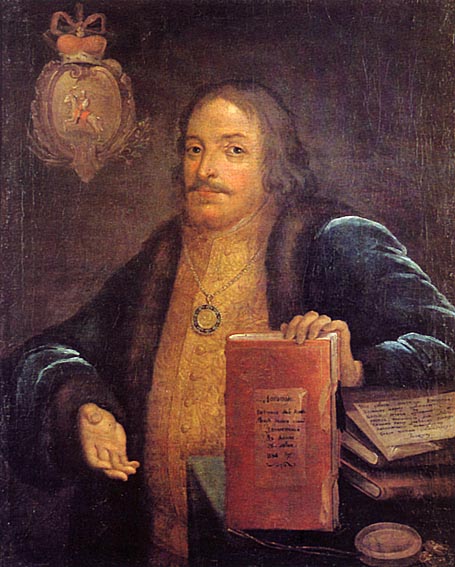Vasily Golitsyn
The Ottoman failure at Vienna in 1683 led to renewed Russian expansion. Strengthened in 1686 by confirmation of the Andrusovo terms in the Treaty of Eternal Peace with Poland, Russia became committed to war with the Ottoman Empire. The leading minister, Prince Vasily Golitsyn, led two campaigns to the Crimea in 1687 and 1689.
The 1687 campaign was hampered by a vast baggage train. Several hundred heavy cannon were difficult to move speedily, and each Russian soldier had to carry many months’ food. There were no supplies on the steppe, and Tatar fires denied the horses forage. Golitsyn was forced to turn back, still 130 miles (210 km) from Perekop. He constructed a fortress, Novobogoroditskoe, at the confluence of the Dnieper and the Samara.
Ottoman defeats by the Austrians, and fear that Russia would gain nothing from peace, led Golitsyn to embark on a second Crimean campaign. After the problems of 1687, he was determined to advance earlier and faster, but was delayed by rivers swollen with spring snowmelt. However, his army of about 112,000 reached the river Karachakrak by 3 May 1689; this was the point of maximum advance in June 1687. From 15 May, the Tatars attacked repeatedly, but the Russian formations held, and on 20 May Golitsyn’s army reached Perekop, at the entrance to the Crimean peninsula. There was, however, no food or water to be found outside the city, and the Tatars refused to leave their defences and to engage in battle. Golitsyn once again withdrew to Novobogoroditskoe on 11 June. Up to 35,000 men died during the retreat, which prompted the fall of Golitsyn and his lover the Regent Sophia, and the rise of Peter the Great. Under Peter, Russian attention shifted from the Crimean peninsula to the exposed, strategic Tatar city of Azov, finally captured in 1696.
